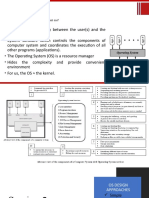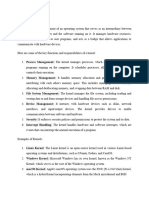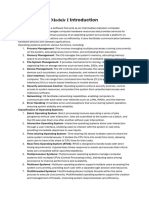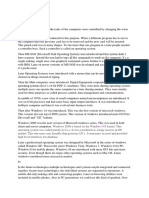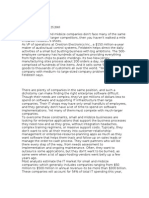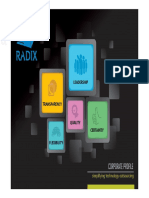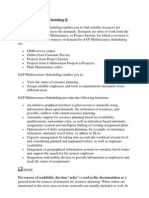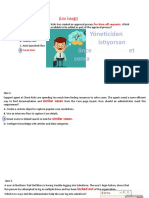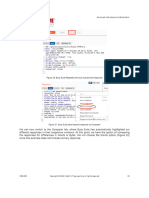0% found this document useful (0 votes)
103 views10 pagesOS Lecture 4 Notes
The document discusses the kernel, the core component of an operating system that manages system resources and facilitates communication between hardware and software. It outlines the functions of the kernel, including process, memory, device, file system management, and security. Additionally, it describes various types of kernels such as monolithic, microkernel, hybrid, exo kernel, and nano kernel, highlighting their design philosophies and examples of operating systems that utilize them.
Uploaded by
Imtiaz AliCopyright
© © All Rights Reserved
We take content rights seriously. If you suspect this is your content, claim it here.
Available Formats
Download as PPTX, PDF, TXT or read online on Scribd
0% found this document useful (0 votes)
103 views10 pagesOS Lecture 4 Notes
The document discusses the kernel, the core component of an operating system that manages system resources and facilitates communication between hardware and software. It outlines the functions of the kernel, including process, memory, device, file system management, and security. Additionally, it describes various types of kernels such as monolithic, microkernel, hybrid, exo kernel, and nano kernel, highlighting their design philosophies and examples of operating systems that utilize them.
Uploaded by
Imtiaz AliCopyright
© © All Rights Reserved
We take content rights seriously. If you suspect this is your content, claim it here.
Available Formats
Download as PPTX, PDF, TXT or read online on Scribd
/ 10










